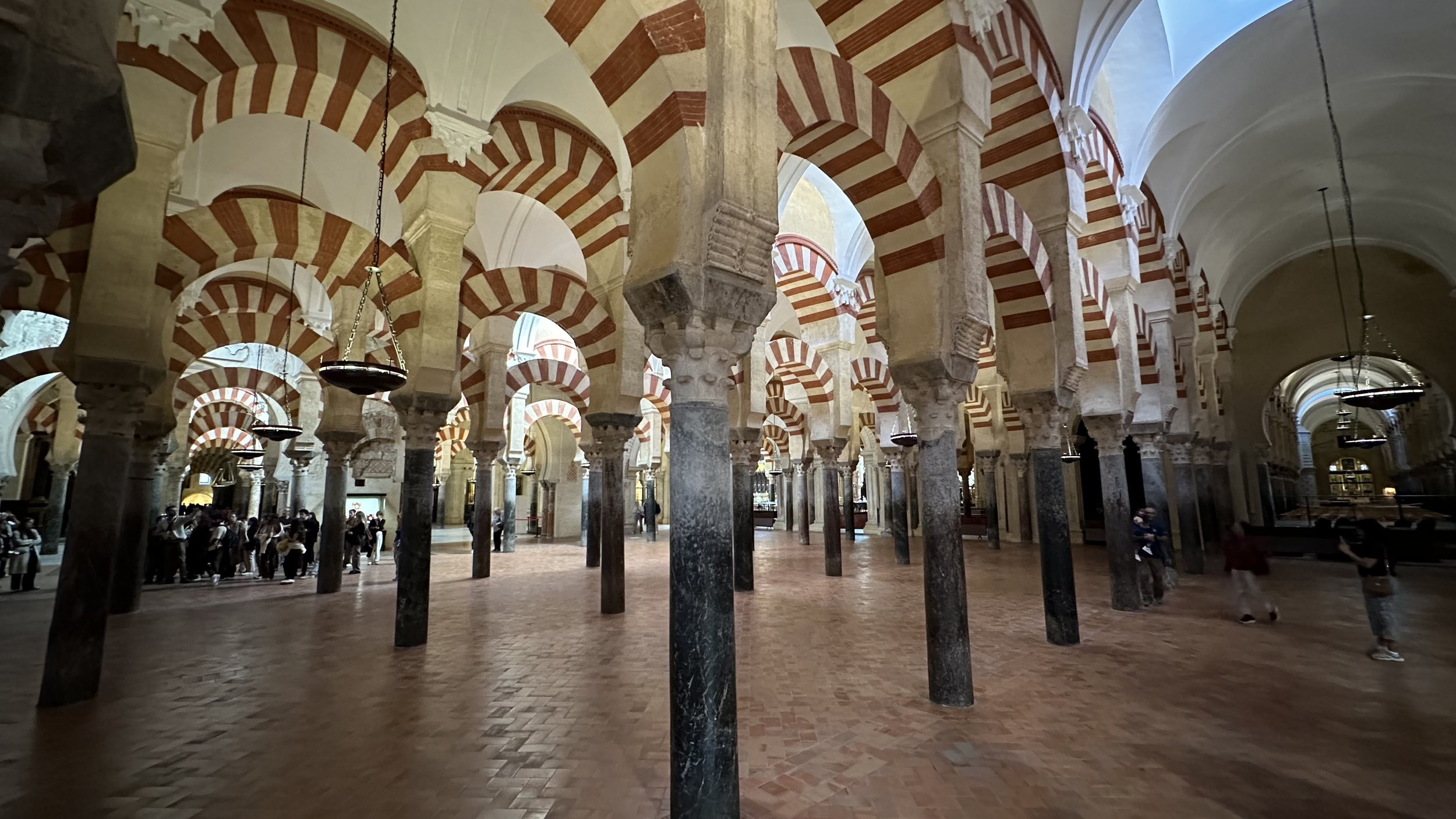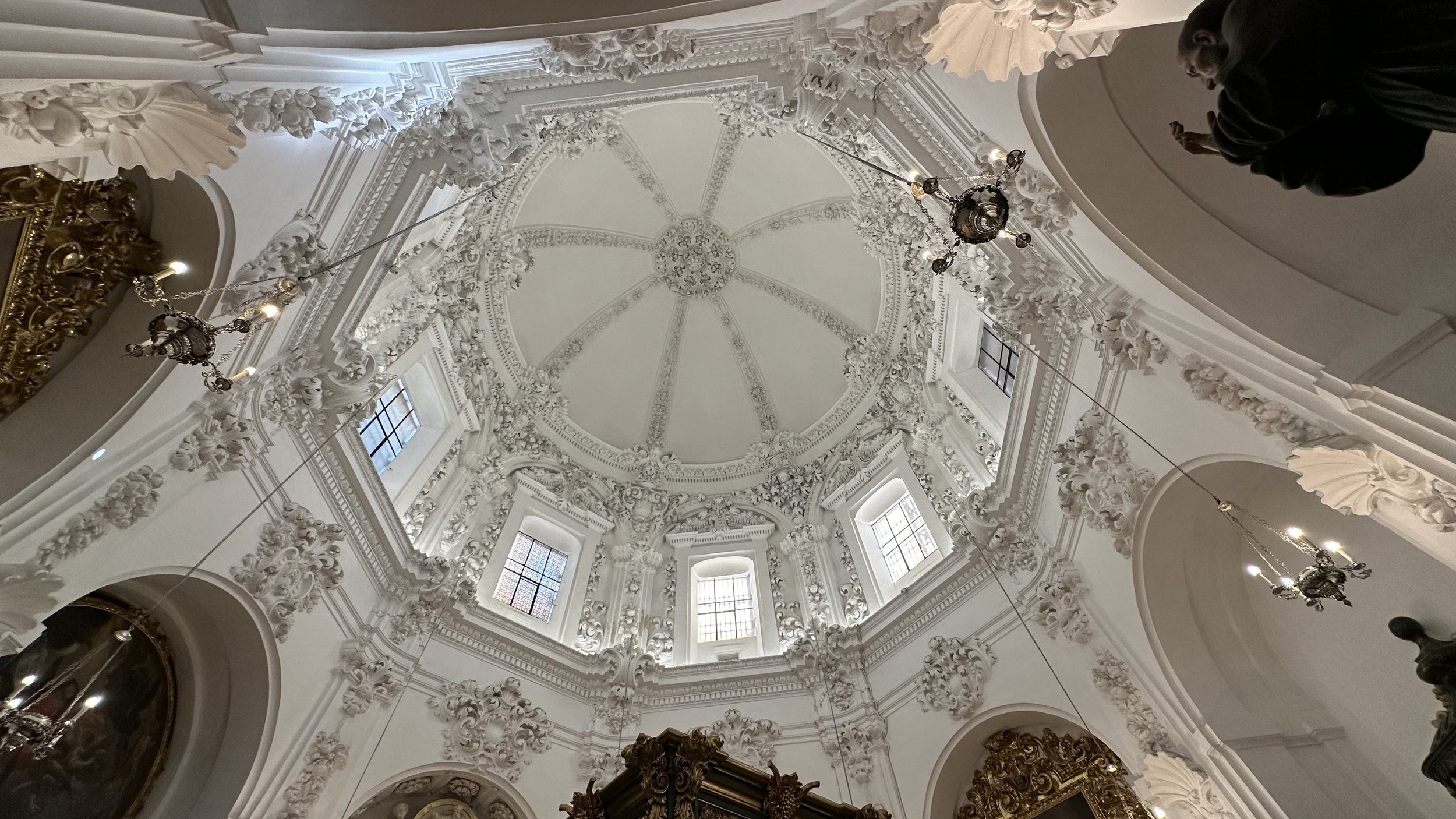No drones, en Córdoba.
The lady at the gate looks me in the eye and smiles slightly, arching just one corner of her mouth. 'No drones en Córdoba,' she tells me, her voice's volume flirting with impoliteness. I glance at her hands still inside my rucksack, then meet her gaze, as steadfast as the two pillars framing her round face.
I understand she means I can’t use my drone anywhere in the city, but something tells me she somehow thinks I’d use it inside the Mosque-Cathedral of Córdoba (AKA La Mezquita – if you speak some Spanish, you’ll see what they’ve done here).
I just smile at her and close my bag while still staring at her. 'Entendido', I say. Then I muse how letting my precious drone fly through the magnificent columns of this marvel wouldn’t be a bad idea. But it remains just an idea because my mum raised a good son, and as soon as I lift my gaze, I am stunned by what I see.
La Mezquita.The ceiling.Stucco and natural light: the heavens.Chaos; not confusion.I’ve visited mosques and, as a Roman, I can say I’ve seen my fair share of churches. But I am pretty certain I have never seen the two on the same day, let alone in the same place. Once a Visigothic place of worship, the site in Córdoba was reimagined as a magnificent mosque by Abd al-Rahman I in 785 AD, marking the inception of the Emirate of Córdoba. It underwent numerous enlargements, with significant contributions including a minaret by Abd al-Rahman III and a lavishly detailed mihrab by al-Hakam II. The structure's evolution continued when Christian forces reclaimed the city in 1236 during the Reconquista, repurposing the mosque into a cathedral and later infusing it with Renaissance elements in the 1500s. This is the bit I learned while visiting. Now, let us talk about what I really saw.
The distinctive white and red columns, alternating red brick and white stone, create a visually striking pattern that is iconic to the Mezquita’s design. You are definitely inside a mosque – until you find Jesus, and I mean it literally. A crucifix stands in the middle of a maze of double arches and marble, as out of place as I am in a church. Confusion – not chaos – kicks in as we wander aimlessly in the immense space that surrounds us.
You’ll find Jesus where you least expect him.We are overwhelmed, and by the time we step outside, the sun is already casting long shadows. The air is still warm, and we feel like walking before it's too late.
Just people living in the moment.We reach the old Roman Bridge (or Puente Romano) at the best time of the day, just in time to be bathed in trillions of photons and the music played by strummers of all shapes and sizes. The Guadalquivir River, placidly flowing between the 16 arches of the bridge and the Calahorra Tower at its southern end, makes for a sunset subject almost too easy to photograph. So, we take lots of pictures, since we haven’t a clue how to take a good one, and we are proud that the images on this blog confirm just that.
A true Roman bridge.El Puente Romano at sunset.
A group of elderly people puts on a picturesque performance right in the middle of the bridge, casually in front of the statue of St. Archangel Raphael, who has been minding his own business for quite some time. A lot can be said about people of faith. They talk a lot about death, drinking blood, and eating flesh, but they also know how to throw a party. We don’t join them because we need to be somewhere important (we’re hungry), but we appreciate the colourful performance nonetheless.
A fine day to be St. Archangel Raphael.
I won’t bore you with the details, but Córdoba is stupendous. From the Alcázar de los Reyes Cristianos to the Jewish Quarter (Judería) and its narrow lanes, we reach Calleja de las Flores: one of the most photographed streets in Córdoba, known for its flower-filled patios, so here’s my poor attempt.
Calleja de Las Flores. What else could it be?Plaza de la Concha.We parked on a quiet residential street some 15 minutes from the city centre, its lemon trees lining the pavement and the sound of myriad music. Yesterday Granada, today Córdoba, tomorrow who cares. I just have to keep on making my mum proud.
It’s all nice and quiet.









